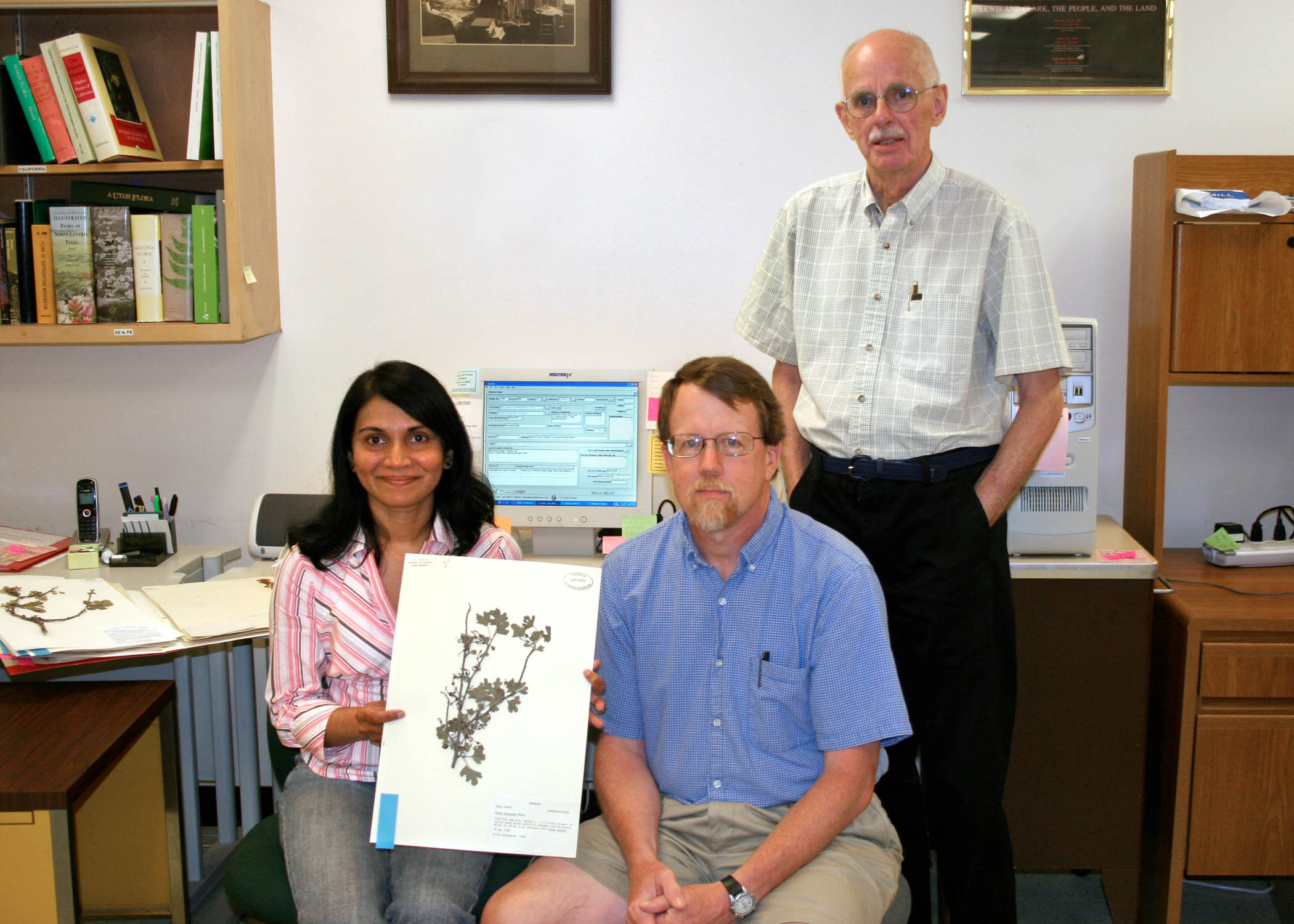
The University of Nebraska State Museum's historic collection of plant specimens reached a milestone recently. On July 15, staff of the Bessey Herbarium entered data about the 100,000th plant specimen into its computerized database system.
The specimen is Ribes odoratum, commonly known as a clove currant or buffalo currant. It was collected at Bohemia Prairie Wildlife Management Area in Knox County, Nebraska on May 27, 1990.
To those working closely with the collections, the individual specimen that marked this feat is no more or less important than the others. Numerous student workers, work study students, graduate students, volunteers, and regular staff have contributed to this achievement over the past 20 years.
The Herbarium is headed by research professor and curator Robert Kaul, collection manager Thomas Labedz, and botany volunteer Veronica Basnayake, pictured. Linda Rader, curatorial assistant, is not pictured but also works on the Herbarium project.
Approximately 32 percent of the Herbarium's 315,000 specimens have been cataloged thus far. Along with plants from Nebraska, there are many specimens from other states and around the world to be entered.
It is not always easy to capture data from labels on the specimens, which have collection dates ranging from the 1857 to today.
"Many older labels, especially those from the 19th century, have obscure handwriting or insufficient or obsolete geographical information on them," Kaul said. "Newer labels, on the other hand, often have daunting amounts of information because of Global Positioning System satellite technology that captures geographical data in great detail. Such data often must be entered manually, which requires great care."
Recently, with the new wave of molecular information, many names have been changed to reflect improved insights into relationships of plants.
The Herbarium's large database enables staff to answer inquiries about the collections and conduct research much more readily. Questions arise from researchers, writers, and students from all corners of the globe.
Before data from the first specimen could be entered into the database, the collections needed an extensive organizational overhaul, which was done in the 1990s by Rader and student workers. That project resulted in specimens being sorted, nomenclaturally updated, organized in labeled folders, and color-coded to locality. Everything was carefully organized in storage cases so retrieval for databasing and everyday work would be more manageable.
In coming years, the staff hopes to make its database available on the Web, allowing for more efficient access to information about the collections. From the website, users would potentially be able to search a map of the United States and view lists of specimens recorded in the Herbarium by locality. Pertinent and useful data on the specimens could then be compiled with the click of a mouse.
"The databasing work in the Bessey Herbarium is part of the State Museum's effort to ensure that our research collections are archived effectively and digitized so that scientists in the U.S. and around the world can access specimen data to address new research questions. Most federally funded projects now require that digital collections data be disseminated broadly, using accepted electronic data standards. Our team in Botany is to be particularly congratulated for having made so much progress in databasing the historic Herbarium collections to a high standard, given the very limited resources that have been available to support this activity," said Priscilla Grew, director of the State Museum.
A view of the Herbarium's layout and a list of plant families is on the Botany website http://museum.unl.edu/research/botany/index.html.
- Dana Ludvik, State Museum
More details at: http://go.unl.edu/a6i